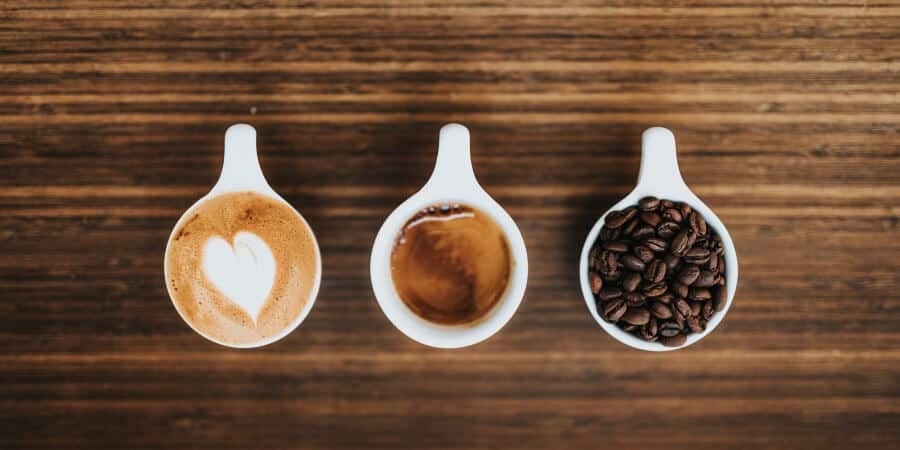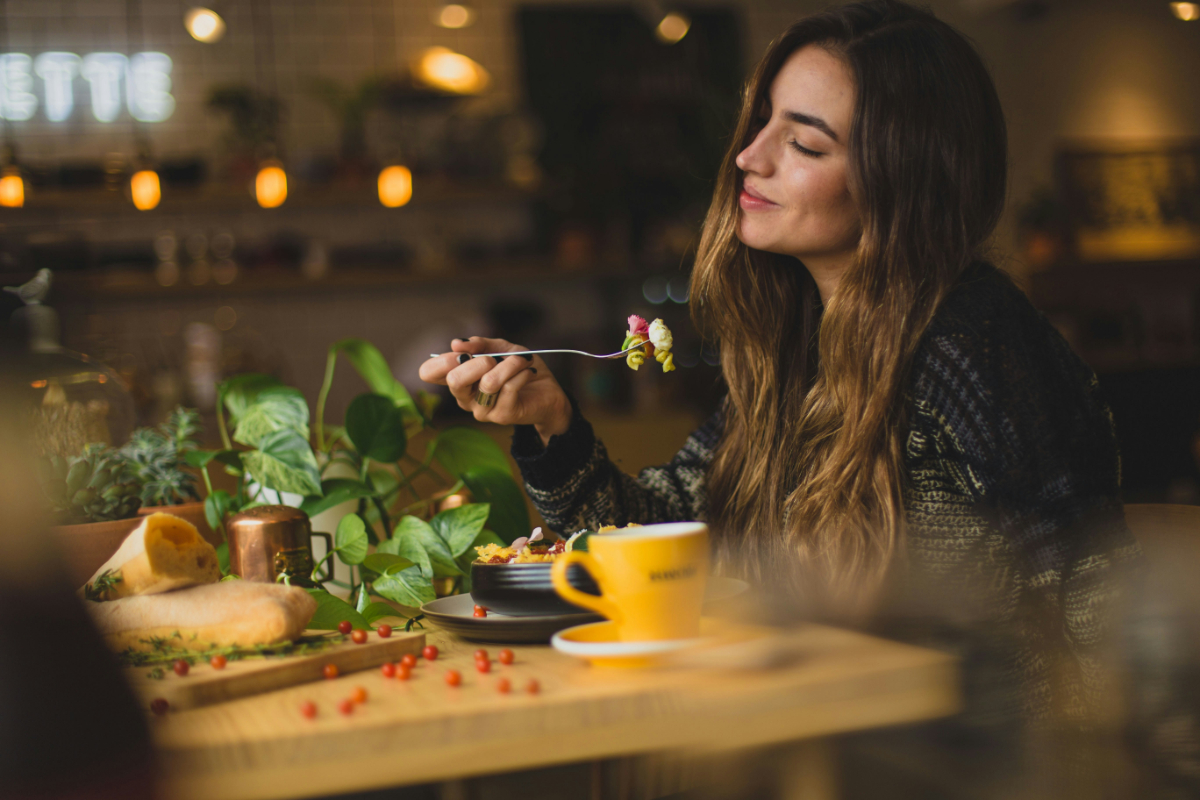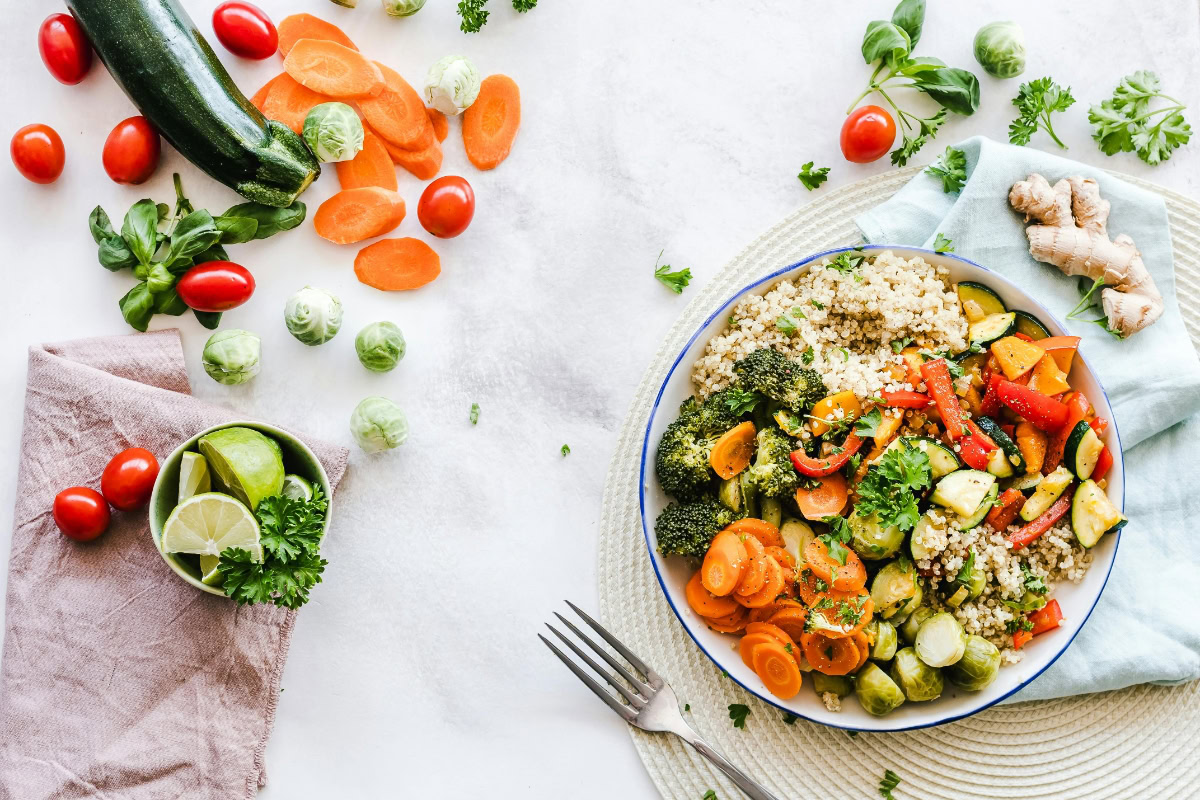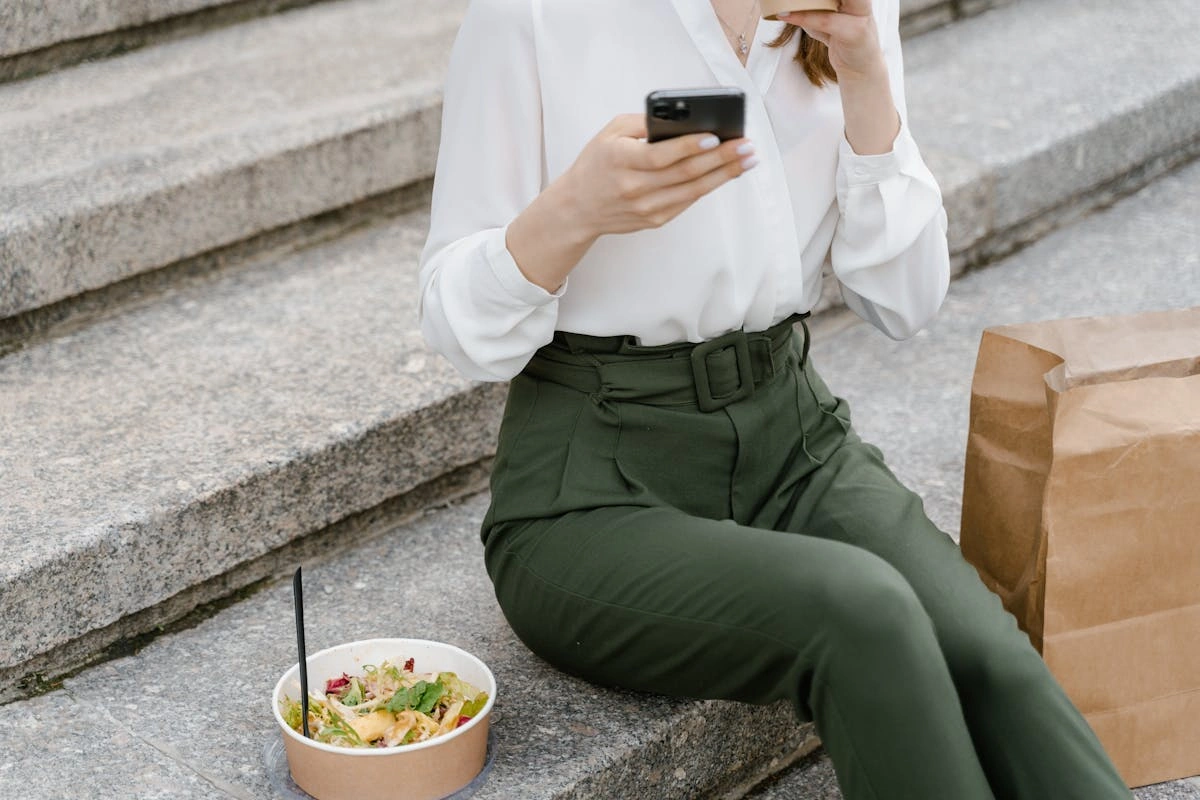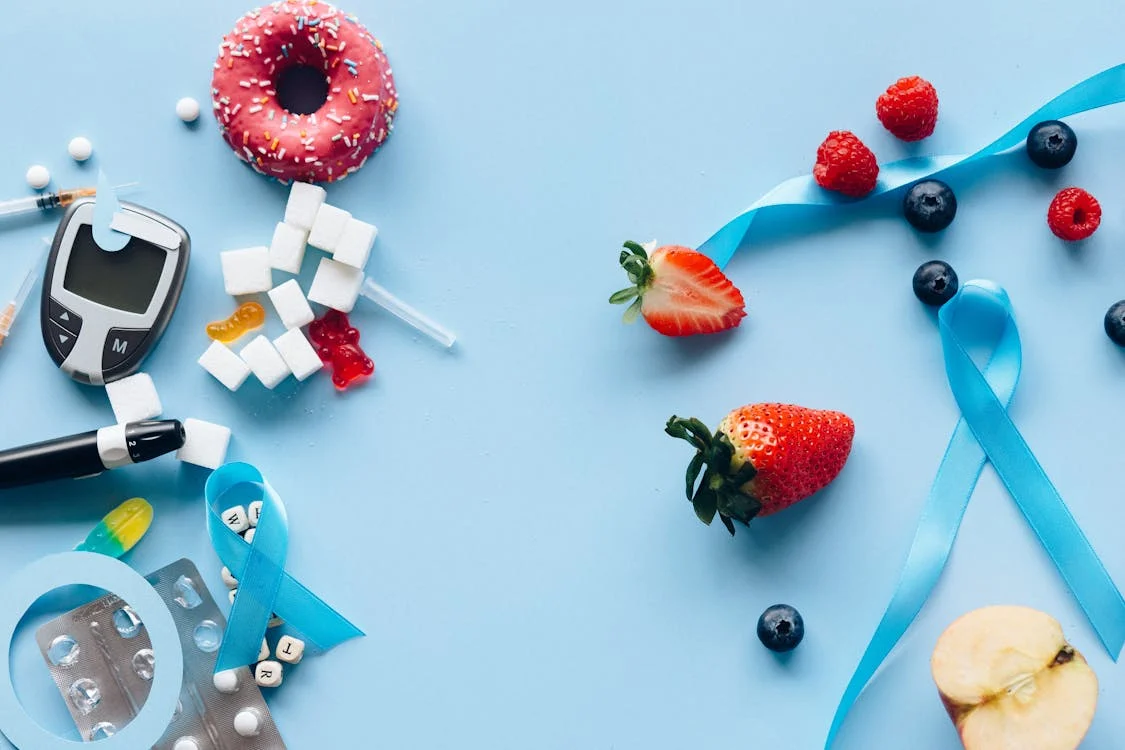If you’re a beginner who wants to start drinking coffee, we recommend trying a cappuccino, latte, café Americano, or mocha first. Flavored coffee helps you get used to the taste by masking the bitterness with cream, sugar, and other flavors.
Every morning, I kick-start my day with a nice cup of Arabica.
I can drink black coffee or strong espresso and really recognize the different aromas and flavors of premium coffee.
But that was not always the case! In fact, it took me a while to go from a coffee noob to a fine connoisseur.
If you’re new to coffee, but want to make drinking this delicious beverage a part of your morning routine, read on. I will teach you a few easy steps you can take to get into coffee drinking!
You will learn:
How to Start Drinking Coffee
Coffee has an acquired taste that many people are turned off by the first time they try it. There are a few different steps you can take if you want it to become a regular part of your routine.
Here’s how to get into coffee.
Get to Know the Different Coffee Beans
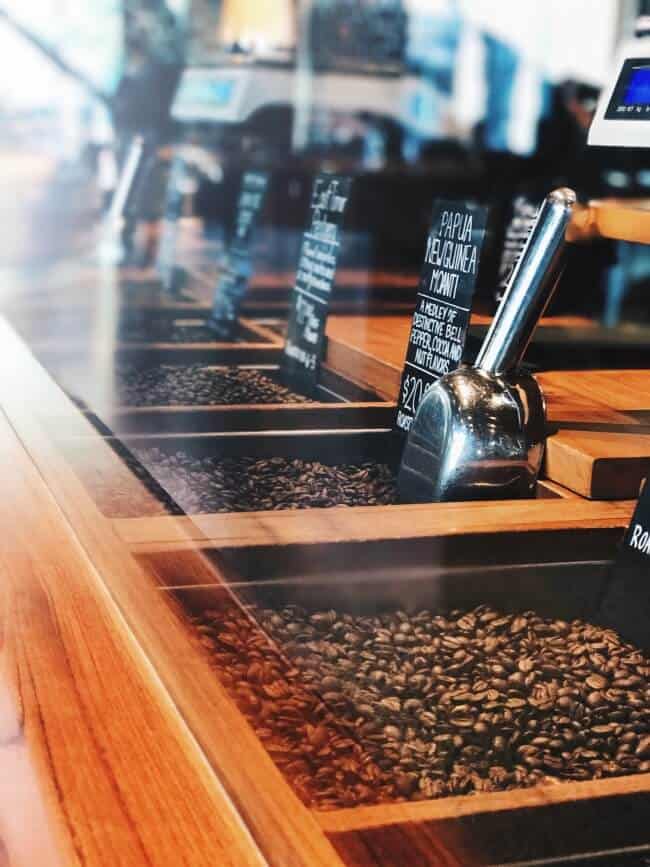
There are a few major types of coffee that have different flavors, aromas, and uses. Here’s a small overview of the different coffee beans.
Arabian coffee (Coffea arabica):
Arabian coffee beans, also known as “arabica coffee,” “mountain coffee,” or “coffee shrub of Arabia,” are thought to be the first cultivated species of coffee.
They make up approximately 60% of worldwide coffee production and are grown predominantly in Latin America.
Arabica coffee beans have a sweet, soft taste with hints of fruity flavors. Their acidity level is on the higher end, which is why the taste of Arabian coffee is often compared to wine.
Arabica beans grow at high altitudes and are difficult to harvest, typically taking several years to grow. For this reason, Arabian coffee tends to be more expensive and is often featured in specialty coffee shops.
I really like this Costa Rican organic Arabica coffee by Café Britt®. It tastes a bit nutty with hints of apple; it’s absolutely delicious!
Another one of my favorites is Arabian Mocha-Java by Peet’s coffee. It’s a rich blend of Java/Arabian mocha beans with chocolate overtones.
Robusta coffee (Coffea canephora)
Robusta coffee beans make up about 40% of the coffee produced in the world and are mainly grown in Africa and Indonesia.
Compared to Arabian coffee beans, they have a stronger taste and double the caffeine. Some describe the taste as harsh and grain-like, with a peanutty aftertaste.
With that being said, robusta coffee beans are easier to grow and cheaper than Arabian beans. They’re typically used to make instant coffee and make up the majority of coffee available by retail in the US.
Coffea liberica (Coffea arnoldiana De Wild)
Only about 3% of the world’s coffee production is focused on liberica coffee beans. These are native to western and central Africa.
They’re known for having a floral, fruity aroma but produce coffee that has a smoke-like flavor. Liberica coffee is uncommon in the US and other Western countries.
Buy the Necessary Coffee Gear
To make great coffee, you need a few tools. Nothing fancy, just a couple of necessities that will turn your coffee into GOLD.
Arm yourself with these 3 pieces of essential coffee gear, and you never have to worry about bad coffee ever again!
A Kitchen Scale
A reliable kitchen scale is an absolute necessity if you’re serious about brewing excellent coffee. The amount of beans you need per cup varies for different brewing methods and types of beans, so you really can’t make a good cup of coffee without it.
A Coffee Grinder
To get the freshest cup of coffee, always grind your beans within a couple of minutes before brewing. Whole coffee beans retain all the flavors and aroma that roasting brought out while pre-grinding them reduces their aromatic compounds pretty fast. Trust me, freshly ground beans = better coffee. I have this cool looking coffee grinder that works like a charm.
A Coffee Maker
Coffee can be prepared in so many different ways, and there’s a brewing vessel for every method, each bringing something unique to the beverage.
Here are the most common coffee makers:
- Espresso machines
- Auto-drip coffee makers
- French press
- Aeropress
- Moka pot
- Turkish pot
Try Different Coffee Brewing Methods
Coffee is a versatile beverage that can be prepared in several different ways. Each brewing method results in coffee with unique textures and flavors, which we explain in detail below.
Espresso
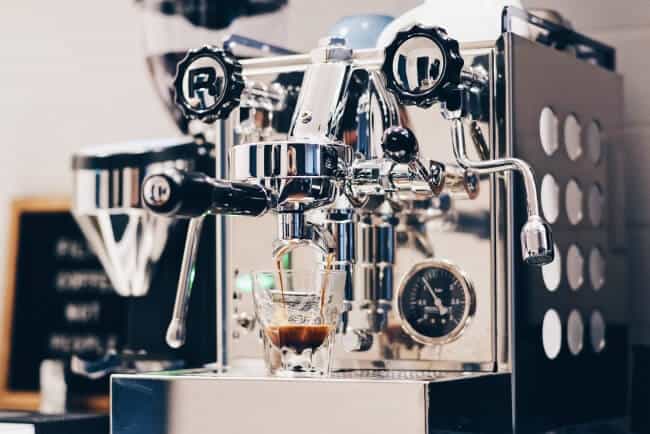
Espresso is brewed by forcing a small amount of water through finely ground coffee beans, to expose the grounds to steam.
It is generally thicker and has a higher concentration of dissolved solids than coffee brewed by other methods.
Espresso has a very concentrated flavor, making it an excellent base for many coffee drinks, including lattes, cappuccinos, macchiatos, mochas, flat whites, and Americanos.
Although the caffeine per unit volume in espresso is higher than other coffee beverages, the serving size is much smaller.
I bought a very affordable espresso machine last year, and I am very happy with it.
French press
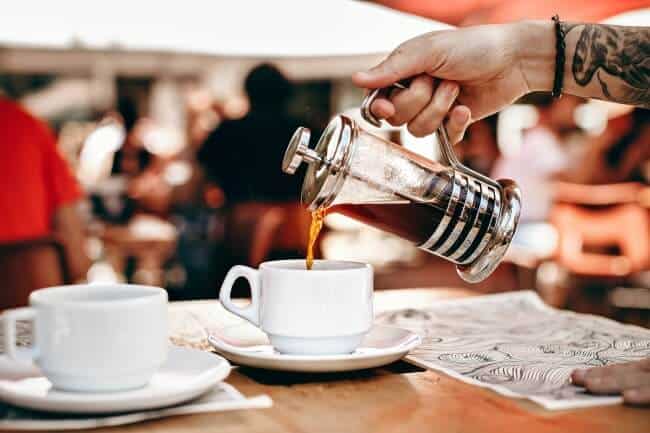
A French press is a brewing device containing a mesh plunger and a filter screen. Ground coffee is steeped with hot water in a beaker for 2-4 minutes. The plunger is then pressed to separate the grounds and hold them at the bottom of the beaker.
French presses work best with coarsely ground coffee. Using French press results in coffee that has a smooth, rich flavor.
A rule of thumb is to brew coffee with hot water at a 2 tbsp ground coffee: 6 oz water ratio when using a French press. Many people choose this brewing method due to its convenience and portability.
When looking for a french press, you want something made out of stainless steel, so it doesn’t rust over time. You also need something with a double filtration system, so you get a clear drink with no coffee grounds. The Mueller is an excellent choice.
Moka Pot
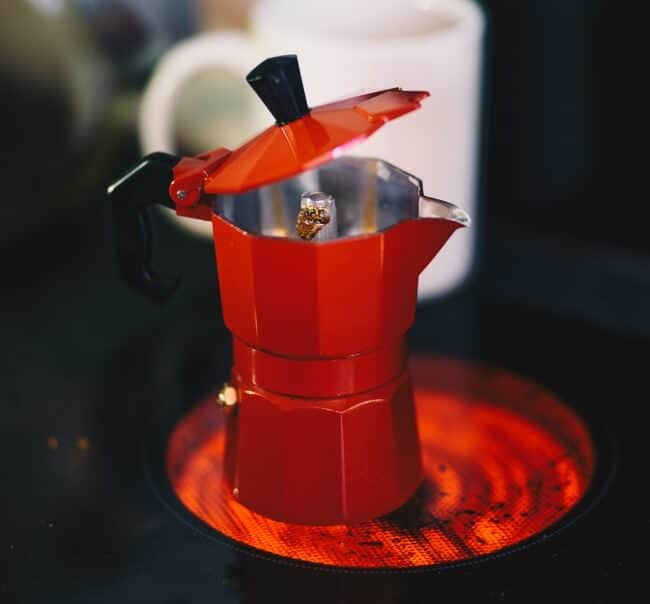
A Moka pot is a stove-top or electric coffee maker that brews coffee by passing boiling water through three chambers: one for water, one for coffee grounds, and one for the final product.
Moka pots produce coffee through pressurized steam, similar to the mechanism for pressure cookers. Coffee brewed using this method has a strong, intense flavor and sometimes turns out creamy.
Moka pot is really the coolest looking coffee machine. If you want to look like a real coffee connoisseur and impress your friends, get one made in Italy like this BIALETTI.
Turkish coffee

Turkish coffee is prepared using finely ground coffee beans, which are not filtered; instead, the coffee grounds are left in the coffee when served. It is typically brewed along with sugar and various spices, such as cardamom.
Not only is this brewing method popular in Turkey, but it’s also used in many Middle Eastern and Southeastern European countries.
The flavor of Turkish coffee is typically described as robust and varies depending on how much sugar is added.
Find Your Favorite Among the Most Common Coffees People Drink
If you’re heading to a coffee shop or simply deciding what to make with your new coffee maker, the possibilities are endless as far as types of coffee drinks to make.
Here we have listed some of the most common coffees that people drink.
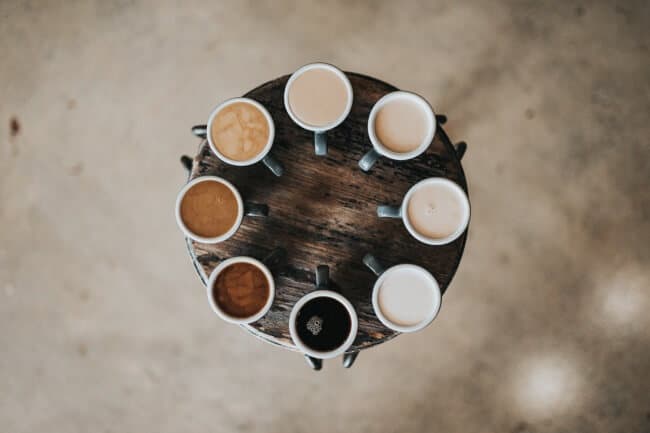
Espresso
Typically served in “shot” form and topped with foam. Its popularity stems from its more concentrated content of caffeine. Can be consumed on its own or combined with other ingredients to make various beverages. You can use bean to cup coffee machines to make this type of coffee.
Latte
That’s probably the best way to drink coffee for beginners. Made with espresso and hot steamed milk. Typically served in an 8 oz glass filled with steamed milk and a standard shot of espresso. Topped with a layer of foamed milk, and often sweetened or flavored.
Cappuccino
Another espresso-based coffee drink made with steamed milk. Served in smaller volume compared to lattes, and topped with a thicker layer of foam. Typically contains 1/3 parts espresso, milk, and foam. Sometimes flavored with cinnamon or cocoa powder.
Americano
Made by diluting espresso with hot water. Similar to black coffee, but has a richer flavor profile. Usually topped with a layer of foam created from the espresso-making process. The caffeine content of the americano varies depending on the serving size of the drink. If you like black coffe, Americano is worth a try.
Iced Coffee
Served chilled and brewed through a variety of different methods. The most common brewing method for iced coffee is cold brew, which involves brewing the coffee cold, eliminating the need for cooling. Iced coffee can also be brewed normally and then cooled by pouring ice over the top. Iced coffee is more diluted; thus, it is typically brewed at a higher strength. Often sweetened or flavored.
Mocha
The chocolate-flavored version of lattes. Made with espresso and hot steamed milk, in addition to chocolate flavoring and sweetener such as cocoa powder and/or chocolate syrup.
Mochas are typically available in white, dark, and milk chocolate varieties. Sometimes topped with foamed milk or whipped cream, they are often compared to hot chocolate.
Take Notes & Learn What You Like
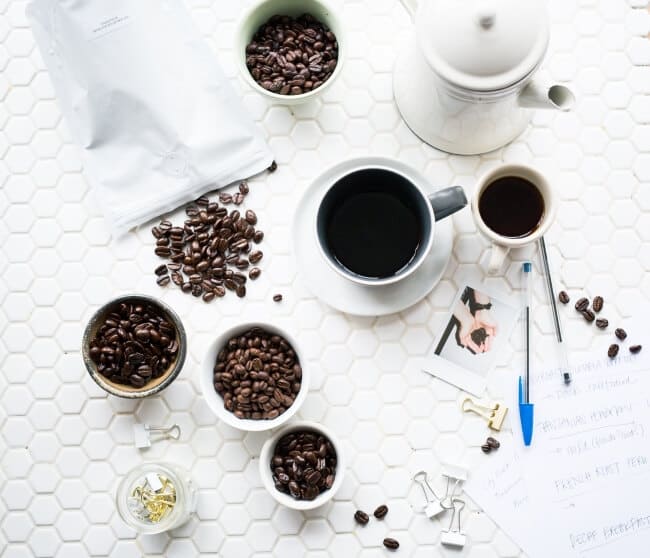
Now that you are all equipped to make great coffee, it is time to learn about what you like! Taking notes about the different coffees that you drink will help you refine your search for the best coffee and learn what to look for in the future.
So, start by taking notes of these things:
- Type of coffee bean
- Its origin
- Type of roast
- Bean weight
- Brewing method
- Type of milk used
- Sweetened or unsweetened coffee
- Flavors you are supposed to taste
- Your thoughts/the flavors you actually taste
Tracking tasting notes helps you understand the types of brews/origins you really enjoy. Perhaps you like chocolatey hints, or maybe berry or citrus nuances from African coffees?
There is a pretty cool app that helps you keep track of all the coffees you try. You can share your notes with the community and, learn even more about coffee.
Best Coffee for Beginners
Drinking coffee black is the best way to savor its texture and flavors, but the bitter and slightly burnt taste puts most beginners off coffee completely.
Fortunately, there’s a way to remedy that:
If you’re completely new to coffee, just start by drinking coffee-based drinks!
The best coffees for beginners are the:
- latte/iced latte
- cappuccino
- cafè Americano
- mocha
The latte/iced latte is the most beginner-friendly coffee as it comes with a lot of milk that neutralizes the bitter taste. Try it with a little bit of sugar or honey to get the sweetness that you like.
Once you get used to the taste of milky coffee, you could move on to the cappuccino.
A cappuccino is slightly stronger as it comes in a smaller cup and has less milk, so it’s the perfect next step. You can add some sugar to further mask the taste or ask your barista to sprinkle some chocolate or cinnamon over it for extra flavor.
If you want to continue experimenting with different coffees, cafè Americano is worth a try next.
While lattes and cappuccinos are diluted with milk, cafè Americano is diluted with water. Water doesn’t mask the flavors of espresso as much as milk, so this is where you really start to taste the different nuances and flavors of the coffee bean.
If that still tastes too strong, you can always add milk and sweeteners.
Finally, if you can’t bring yourself to drink “real” coffee just yet, try a mocha – a mix of hot chocolate and espresso.
Coffee for Beginners at Home
You don’t always have to head to Starbucks to get a good cup of joe. With a little bit of practice and patience, your morning cup of coffee at home will rival that of baristas around the country!
The secret to good coffee?
High-quality coffee beans.
We’ve already talked about how to start drinking coffee above, so here, I’d like to introduce some of the best coffee blends for beginners at home:
The Luminosa Breakfast Blend by Peet’s Coffee is a light roast blend that has a pleasantly mild and smooth taste. It’s soft enough for new coffee drinkers, yet flavorful enough for seasoned coffeeholics as well. Its distinctive feature is the sweet and fruity aroma that you’ll instantly love.
The Costa Rica Aurora is another light roast blend perfect for beginner drinkers. A mix of Costa Rican and Kenyan coffee beans brings to you a bright yet mild, citrusy flavor profile with notes of blackcurrant.
Peet’s customer favorite, the Big Bang, is a medium-bodied blend, perfect for coffee pros and beginners alike. It has a sweet and citrusy taste without the acidity of most medium roast coffees.
What are the Origins of Coffee
There are many legends about the origins of coffee, but its heritage can be traced back centuries.
The first reported discovery of coffee was within the Ethiopian plateau when a goat herder noticed his animals’ energy levels increased after eating berries from a plant.
He reported his findings, and monks at the local monastery began experimenting with the berries. They discovered that drinking a beverage made from the plant increased their energy and alertness.
Word spread about the energizing coffee drink to the Arabian Peninsula, which is where coffee production and trade began in the 15th century. (1)
The stimulating effects of coffee are mostly due to its content of caffeine, which is a central nervous system stimulant, and one of the world’s most widely used psychoactive drugs. Coffee brewed with grounds and tap water contains approximately 95 mg of caffeine per cup. (2)
Presently, coffee plants are grown worldwide in more than 70 countries, including the equatorial regions of North and South America, Southeast Asia, India, and Africa.
Coffee plants are native to:
- Tropical Africa
- Madagascar
- Comoros
- Mauritius
- Reunion in the Indian Ocean
There are many steps required to produce coffee:
- Once coffee plants are ripe, their berries are picked, processed, and dried.
- Dried coffee berries are referred to as the “beans,” which are roasted at various temperatures to induce a multitude of flavors.
- Once the coffee beans are roasted, they are ground and then brewed with hot water to produce the beverage known as coffee.
Coffee can be consumed in several different ways and has some unique properties that have the potential to promote health and wellness.
What are the Health Benefits of Coffee
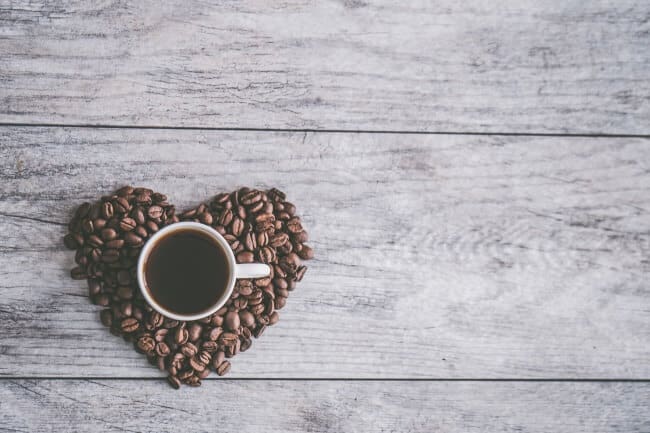
Not only is coffee a warm, comforting beverage; it also provides a variety of health benefits to those who drink it.
Most of coffee’s health-promoting effects are attributed to its content of powerful antioxidants, including chlorogenic, ferulic, caffeic, and n-coumaric acids, as well as melanoidins and diterpenes. These help protect your cells from damage, which may prevent inflammation and boost your immune system (3, 4).
The optimal “dosage” of coffee to promote health benefits is between 3-4 cups of coffee per day. However, some studies show drinking as few as one cup to as much as 8 cups of coffee per day to provide health benefits (5, 6).
Here are some of the potential health benefits of coffee.
Increases energy levels
The caffeine in coffee may help keep you energized and alert, which can, in turn, prevent sleepiness, make you more productive and improve reaction times (7).
Provides important nutrients
Although coffee doesn’t provide a significant amount of essential nutrients per cup, it provides trace amounts of B vitamins, magnesium, phosphorus, manganese, and omega-6 fatty acids, which can add up especially if you drink more than one cup of joe a day (2).
Optimizes brain health
Drinking coffee may play a role in improving memory and reducing symptoms of mood disorders, such as depression. Further, it has been shown to lower risk of developing brain-related diseases, such as Alzheimer’s and Parkinson’s (7, 8).
Helps with weight control
Individuals who drink coffee may burn more calories throughout the day than those who don’t drink coffee. This metabolism boost may support weight loss and maintenance. Additionally, coffee is extremely low in calories, which helps maintain energy balance if you are trying to lose weight (9).
Reduces the risk of chronic illness
Coffee has been shown to reduce the risk of diseases, including type 2 diabetes, liver disease, heart disease, and certain types of cancer (10).
Improves exercise performance
Due to caffeine’s ability to increase adrenaline levels and break down body fat, drinking coffee may have a positive impact on your endurance and time-to-exhaustion while exercising (11).
Supports longevity
Perhaps the most important health benefit of coffee is that it can help you live longer! Some studies show that coffee drinkers have a lower overall risk of death compared to those who don’t drink coffee (12).
It is worth mentioning that most studies conducted on coffee intake have been observational. These don’t prove a cause-and-effect relationship. Whether or not you experience benefits from drinking coffee will depend case-by-case.
Is Drinking Coffee Safe?
Some people are highly sensitive to caffeine, in that consuming it makes them excessively anxious and interrupts their sleep.
Further, certain populations may be particularly vulnerable to the negative effects of caffeine:
- Pregnant and lactating women
- Children and adolescents
- Those with underlying heart or mental health conditions.
There have also been some studies that have associated drinking large amounts of coffee with a higher risk of fractures in postmenopausal women. (13, 14)
The effects of caffeine also have the potential to become addictive. Abusing or becoming dependent on coffee isn’t healthy. It’s best consumed in moderation, and helpful to take “breaks” from it every so often to make sure your body doesn’t become dependent on it for energy.
If you don’t already drink coffee, it’s worth having a conversation with your doctor before starting to prevent any adverse reactions with your health history, medications, or underlying conditions.
How to Start Drinking Coffee: 5 Final Tips
- First, focus on quality.
There are many different types of cheaply-made coffees available on the market. Although these coffees are affordable, they don’t do the complex and delicious flavors of coffee any justice.
This doesn’t mean you have to break the bank to buy good coffee, but do your research to determine the type of coffee bean it was made with, where it was grown, as well as where and when the coffee beans were roasted.
- If you’re making coffee at home, focus on whole bean coffee rather than ground.
Buying ground coffee saves you time, but you’ll miss out on the flavors that are protected by coffee bean shells.
- Consider buying Fair Trade brands
Some people prefer to purchase Fair Trade coffee, which essentially means that the coffee producers are paid fair prices.
Having a Fair-Trade Certification doesn’t necessarily impact the quality of the coffee. However, it ensures sustainability and fairness for all involved, from the coffee growers to the workers and the environment.
If this is important to you, then it may be beneficial to start your coffee drinking ventures with a Fair-Trade version.
- Start slow
It’s also important to start slow if you’re new to coffee to prevent digestive distress, adverse effects from caffeine, and simply to give your taste buds time to adjust to the flavors.
You can start by drinking two ounces a day, then four ounces, and so on until you’ve found your perfect serving size.
- Consider starting with decaf
Another important consideration before starting to drink coffee is its caffeine content. If you’re not used to consuming caffeine, then you may want to start with drinking decaffeinated coffee. You should also make sure to talk to your doctor before adding caffeine to your routine.
Using all of these strategies will help you enjoy coffee and all that it has to offer!
